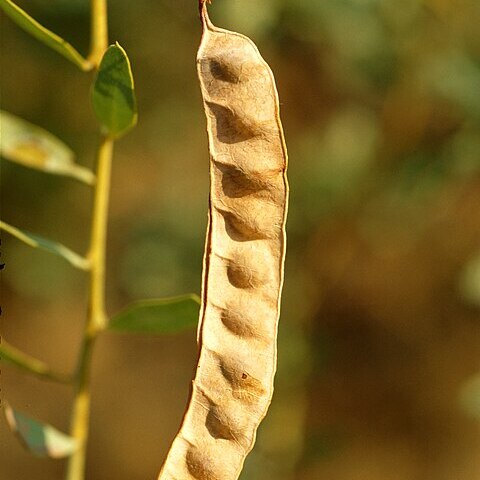Somewhat diffuse, glabrous shrub or tree 1.5-3 m high, sometimes 6 m. Stipules spinose, commonly absent or infrequent on mature plants, 3-10 mm long. Phyllodes variable, narrowly oblong to narrowly elliptic or narrowly oblong-oblanceolate, sometimes linear or elliptic, usually 10-30 mm long and 3-8 mm wide with l:w = 3-7, green to glaucous, subfleshy, finely wrinkled when dry; midrib and lateral nerves obscure or absent; gland ±basal, rather prominent. Inflorescences simple, 1 or 2 per axil, initiated synchronously with phyllodes on new shoots; racemes rare; peduncles 1-2 cm long, with caducous bract near or above middle; heads globular, 40-70-flowered, golden. Flowers 5-merous; sepals free, narrowly spathulate. Pods narrowly oblong, to 4-5 cm long, 8-12 mm wide, chartaceous. Seeds transverse, ovate to elliptic, usually 4-5 mm long, ± dull, black or mottled; funicle short, thick, narrowly arillate.
More
A shrub or small tree growing up to 3 m tall. It is often straggly. It has spiny processes near the base of the leaf. Older trees have less spines. The leaves (phyllodes) are light green. They vary between being linear to oval shaped. The midrib can be easily seen. On young shoots leaves and flowers develop at the same time. Normally there are two flower stalks in the angles where leaves join the stem. The flower heads are pale yellow balls. The flower heads are small but there are many of them. The pods are oblong and flat. They are raised over the seeds. The pods are thin and papery. They are light brown. The seeds are brown and they cling onto the pod. Where the seeds join the pod is pale olive.
Can be grown by seedlings. Seeds needs soaking.


